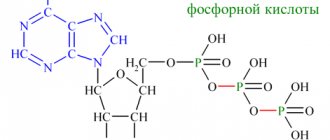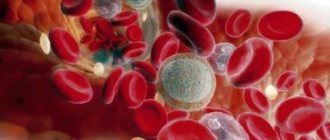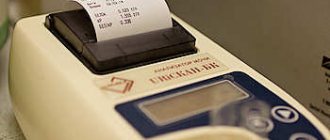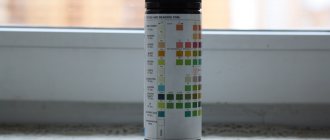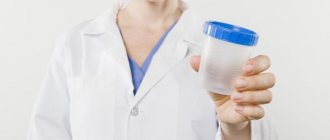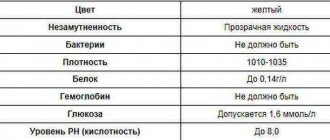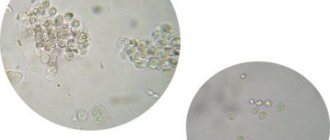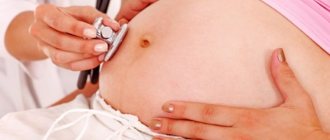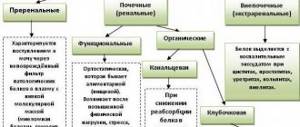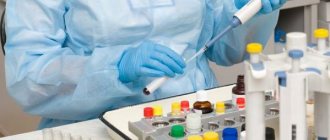A portion of urine in the amount of 10-15 ml is collected in a universal plastic container. Urine collection is carried out at any time of the day. Delivered to the laboratory in a primary container. Screw the container lid tightly. Store and transport at T=+2+8⁰С in a primary container in a vertical position.
Research method:
Rapid screening testing for the qualitative determination of cotinine (nicotine) in urine using immunochromatographic analysis.
Cotinine (nicotine) is a psychoactive substance (PAS). A surfactant is a general concept; it defines any substance of natural or artificial origin that affects the functioning of the central nervous system, leading to a change in mental state. The term “drug” defines a psychoactive substance that is prohibited by law.
Urine is the most informative material for screening determination of cotinine (nicotine). The period during which it is possible to detect cotinine (nicotine) in urine depends on the dose, frequency of administration, body weight and the individual characteristics of the metabolic processes of a particular patient.
INTERPRETATION OF RESULTS:
Reference values (variant of the norm).
Example of a research result:
| Parameter | Result | Reference values |
| Cotinine (nicotine) | Negative | Negative |
| Commentary on the study for the determination of cotinine (nicotine). | ||
Attention!
The result of the study is of a preliminary informational nature.
Within 7 calendar days from the date of registration of the screening test, if necessary, you can place an additional order for a confirmatory test (performed from the same sample of biomaterial).
Appropriateness of screening and confirmatory tests.
| code | Name of screening test | code | Name of confirmatory test |
| 240231 | Cotinine (nicotine) | 240271 | Nicotine and its metabolite cotinine. Differential diagnosis of active and passive smoking. |
We draw your attention to the fact that the interpretation of research results, diagnosis, as well as the prescription of treatment, in accordance with Federal Law No. 323-FZ “On the fundamentals of protecting the health of citizens in the Russian Federation” dated November 21, 2011, must be carried out by a doctor of the appropriate specialization.
By continuing to use our site, you consent to the processing of cookies, user data (location information; OS type and version; Browser type and version; device type and screen resolution; source from where the user came to the site; from which site or on what advertising; OS and Browser language; which pages the user opens and which buttons the user clicks; IP address) for the purpose of site operation, retargeting and statistical research and surveys. If you do not want your data to be processed, please leave the site.
Copyright Federal Budgetary Institution Central Research Institute of Epidemiology of Rospotrebnadzor, 1998 – 2020
Central office: 111123, Russia, Moscow, st. Novogireevskaya, 3a, metro station “Shosse Entuziastov”, “Perovo” +7 (495) 788-000-1,
! By continuing to use our site, you consent to the processing of cookies, user data (location information; OS type and version; Browser type and version; device type and screen resolution; source from where the user came to the site; from which site or on what advertising; OS and Browser language; which pages the user opens and which buttons the user clicks; IP address) for the purpose of site operation, retargeting and statistical research and surveys. If you do not want your data to be processed, please leave the site.
Who needs to donate urine for albumin and why?
Why is urine tested for microalbuminuria? The analysis is carried out for the early detection of nephropathy in diabetes mellitus and systemic diseases developing against the background of heart failure or hypertension. Also, a test for protein excretion is prescribed to diagnose renal failure during pregnancy, glomerulonephritis, cystic formations and kidney inflammation. Other indications for the procedure are amyloidosis, lupus, autoimmune diseases.
So, urine analysis for microalbumin should be done when:
- Uncontrolled and prolonged hypertension and heart failure, characterized by constant edema.
- Newly discovered type 2 diabetes (tested every six months).
- Hyperglycemia in children (analysis is done one year after the onset of the disease).
- Glomerulonephritis as part of differential diagnosis.
- Amyloid dystrophy, lupus erythematosus, kidney damage.
- Pregnancy accompanied by signs of nephropathy.
Also, a test for microalbumin in urine is done for type 1 diabetes mellitus that has lasted for more than five years. In this case, diagnostics are carried out every 6 months.
How to do a blood test for nicotine
Often modern parents are faced with the need to check whether their child smokes. How to do this unnoticed by him and be sure that the result is correct? The most accessible, inexpensive and accurate method of checking nicotine levels in the blood is a rapid nicotine blood test. Let's find out exactly how it needs to be carried out and what is needed for this.
Blood test for nicotine
Biochemical analysis
Experts clearly answer the question of whether it is possible to smoke before taking a urine test. They do not recommend using nicotine at least an hour before urination for the purpose of collecting body fluids. Tobacco and its components affect the composition of urine. Moreover, if a person smoked any narcotic herb, then the analysis will reveal its presence in the urine.
Thus, doctors strongly do not recommend that patients use nicotine before submitting biomaterial for analysis, since smoking can have a significant impact on its composition. Cigarettes have a noticeable effect on a person’s hormonal levels, and smoking immediately before the test can significantly distort the picture of its results and lead to an erroneous diagnosis.
The results directly depend on the preparation for them. Before a biochemistry test, you need to refrain from sports and emotional turmoil. The consumption of alcohol and especially tobacco is prohibited during the day. You cannot suck candy or chew gum. A test is taken after a 12-hour fast - this is the main requirement. You will have to have dinner the day before no later than 18:00. If there is an urgent need to get tested, the fasting time is reduced to 4 hours.
Sugar analysis
Features of the analysis:
- When taking a blood sugar test, an 8-hour break from eating is required; only water is allowed to drink. Alcohol and sweet waters are prohibited.
- Smoking is strictly prohibited before taking a sugar test.
- In the morning, you should not brush your teeth with a toothpaste containing sugar.
- Be careful when taking medications. If there are exacerbations of chronic diseases, report the problem to your doctor.
- The results of the analysis may be distorted during the course of infectious diseases.
- A few days before the procedure, you do not need to abuse smoking or alcohol, it takes a long time to be eliminated from the body, this will have a bad effect on the results.
- Sports activities will have to be postponed for several days.
Smoking before taking the test may result in incorrect results. Before taking the test, you should try to abstain from smoking for at least 12-24 hours.
Nicotine tests are sometimes performed when entering into contracts with insurance companies, as well as for work-related reasons. Such tests show how great the effect of nicotine is on the body of a particular person and whether the body is under such influence at all. When performing tests, doctors look for traces of nicotine and other related substances, such as cotinine.
It is more convenient to evaluate the use of tobacco products based on cotinine content, since it remains in the body longer than nicotine. The half-life of nicotine is only 2 hours, while the same figure for cotinine reaches 16 hours.
What is a nicotine test?
Test strips, which are sold in pharmacies, will help you find out if your child is a smoker in just a few minutes. A number of simple steps need to be taken:
- Ask your child to pee in the sample collection container (you can come up with any reason, without telling the real reason)
- Dip one test strip into a container with urine
- Let the strip dry for 2-3 minutes
- Look at the result
A huge plus for parents is that the result will not be false negative even if the last cigarette was smoked more than two days ago.
It is worth saying that there are more accurate express tests that will detect even the slightest traces of nicotine in the blood and urine, even if the last puff was taken more than two weeks ago. However, their cost is high, and acquiring them is not so easy.
General requirements
Before donating blood from a vein or finger, the rules are as follows:
If the test is not scheduled for the morning, you should not limit yourself to food intake for a long time. In this case, you can easily have breakfast 3 hours before the procedure.
When donating blood for donation, you need to stop smoking a few hours in advance. As for drinking tea and coffee, you should exclude them when preparing for the test. The majority of doctors surveyed agree with this, even if drinking drinks without sugar, they activate the same processes in the body as eating food. When indicating blood donation on an empty stomach, tea and coffee must be excluded.
Before testing for HIV infection, the recommendations are no different from a general blood test. 8 hours before the test, do not eat, smoke or drink alcohol.
24 hours before the test, it is recommended to unload the body. You should avoid fatty or heavy foods. Remove sweets if you have a habit of drinking coffee with sugar.
Before donating blood from a vein, stop smoking a day before. Experts assure that these components will have a detrimental effect on the test results. Before donating blood, you need to rest for a couple of minutes, since physical stress also affects a whole list of indicators.
How soon can you start eating? After the procedure, you can have a snack; you should not smoke for 2 hours. Especially when collecting blood from a vein in large quantities. Have a snack, you can dilute the snack with a cup of tea or coffee with sugar, this helps to restore strength.
What to do if the result is positive
If the test strip shows a positive result, do not panic and come up with a punishment for the child. Perhaps there are heavy smokers in your family or your child’s environment, with whom the child stays for a long time? In this case, there is a high probability that the son or daughter is passively inhaling a considerable dose of nicotine smoke, which also settles in the blood and urine.
Medical fact! If about two packs of cigarettes are smoked in the house in total, and the child is in the apartment, he receives the amount of nicotine that is contained in 2-3 cigarettes. This is a serious reason to move the smoking process outside or at least to the landing. After all, adults themselves often provoke their children to do wrong things.
Effect of cigarettes
Each specialist is aware of the situation with tobacco - smoking is prohibited before blood collection. Is it possible to smoke before donating blood on an empty stomach? If you smoke on an empty stomach, the test results will be distorted. Serum levels of catecholamines and cortisol are elevated in smokers.
How does the participation of these hormones affect the analysis? This often leads to a decrease in eosinophils and an increase in monocytes in the blood. Harmful addiction increases the number of red blood cells and decreases the level of white blood cells.
Is it possible to cheat the test?
Unfortunately, it is possible to cheat a blood nicotine test. There are many such methods and, rest assured, modern children know them and can deceive you. Let's learn about the most popular and effective:
- The child can replace the research material. If there are several children in your family, there is a possibility that an adult child will ask a non-smoking sister or brother to “share” the biomaterial in order to mislead you.
- Adding salt to collected urine. In addition to salt, kitchen detergents are often added. The fact is that the listed means change the chemical composition of urine to such an extent that the acidity of the liquid becomes so high that the reagent on the test strip cannot detect the presence of nicotine in the collected urine. You can suspect such a substitution by the unnatural color of urine, the presence of foam or the smell that detergents can give.
In any case, you can always do a more accurate test in a laboratory, where blood, rather than urine, is taken. It is worth saying that an express test for the presence of nicotine in the blood is done in almost every private laboratory.
Causes of bad habit
Tobacco smoking is a problem not only for children from disadvantaged families, but also for those who live in socially stable families.
The main reasons for starting smoking are the following:
- communication problems;
- stress;
- growing up and adolescence;
- imitation of idols and heroes of television screens;
- mental disorder;
- imitation of parents and older friends;
- difficult family situation;
- moving, new school, dating, etc.
What nicotine tests can be purchased?
Firstly, it is worth saying that you need to buy tests strictly in pharmacies, this is the only way you can be sure that they were stored in proper conditions and that the end date is correct.
The most popular medical test currently is the test system produced by MED-EXPRESS-DIAGNOSTIKA. It can detect the presence of nicotine in urine even 36 hours after the last cigarette. The express analysis will take no more than 5 minutes.
Price test systems:
- Disposable test strip, 1 pc. – 40 rubles;
- Set of test strips, 10 pcs. – 400 rubles;
- Set of test strips, 20 pcs. – 800 rubles;
- Set of test strips, 50 pcs. – 2000 rubles.
What does low createnine mean?
Creatine levels are reduced:
- progressive kidney disease
An additional determination of the ratio of albumin and creatinine in urine is prescribed. Albumin levels are the main signal of kidney disease. Protein (albumin) concentration is influenced by many factors that are not related to health, including physical activity and time of day. This is how the albumin-creatinine ratio was obtained.
- kidney amyloidosis;
- hyperthyroidism;
- anemia;
- muscle degeneration;
- polymyositis;
- myositis;
- narrowing of the lumen of the vessel;
- blood cancer;
- radioactive radiation;
- lack of animal proteins in the diet.
What is nicotine and why is it dangerous?
This is a strong poisonous component of cigarette smoke. It is considered an alkaloid and is of plant origin. In its pure form, it is an oily liquid whose color is difficult to describe.
Nicotine in cigarettes is addictive, so many smokers cannot quit the bad habit on their own and resort to various medications.
The craving for tobacco is strong.
With a long history of smoking, a person cannot quit the habit, as he experiences an emotional uplift when he receives the next dose, which is associated with an increase in the concentration of the joy hormone. As a result, the blood vessels in the brain dilate, the pressure decreases, and the person experiences a surge of strength.
Nicotine addiction is equated to a drug addiction. After just one cigarette, a habit can form. Many smokers experience the following symptoms when they lack nicotine:
- nervousness;
- feelings of fear;
- malaise;
- headache;
- uncomfortable sensations.
All of them indicate the so-called nicotine withdrawal, or abstinence. Because of this, there are difficulties in giving up cigarettes. However, the habit only worsens your health over the years, so you need to fight it.
And yet you can lose your license for smoking while driving!
Scientists have not yet fully studied the effect of vaping on the human body.
With the help of tests, doctors are able to detect nicotine in the body of those people who use electronic cigarettes or vaping.
Vaping is a relatively recent invention, so world science has not yet sufficiently studied its short-term and long-term effects. Researchers don't yet know how differently the body processes nicotine from e-cigarettes from nicotine that enters the body through regular cigarette smoke.
The scientific work carried out gave mixed results. Some studies have shown that vaping delivers less nicotine to the body than smoking traditional cigarettes. However, based on the results of other experiments, it was found that the level of nicotine in the body of people who prefer e-cigarettes may be even higher.
It is difficult for scientists to calculate the volume of nicotine inhaled when vaping, since different e-cigarette solutions contain different amounts of this substance. Moreover, when studying specific types of products, researchers identified a discrepancy between the nicotine content data indicated on the packages and the actual volumes of nicotine. The difference ranged from -89 to 28%
Currently, scientists continue to study the effect of nicotine from vaping on the human body. To determine the amount of nicotine people consume, researchers look at the following factors:
- nicotine concentration in the vaping solution;
- the efficiency of nicotine delivery from the vaping device into the body;
- nicotine vaping technique, such as the frequency or duration of inhalations.
Why? After all, nicotine is not a substance that is prohibited for use when driving a vehicle! Nicotine is generally eliminated from the body quite quickly and gives many false results, since it depends on the functionality of the kidneys and urinary system, as well as other individual characteristics of the body. Therefore, nicotine content is not determined in almost any analysis.
But nicotine has a metabolite “” - a product of its breakdown in the human body. And instead of nicotine, it is much more effective to determine the content of cotinine in the driver’s urine - it is not excreted from the body for a whole week, its concentration is relatively stable, regardless of external influences. And it is cotinine that is a prohibited substance.
The same information letter states that when conducting CTI, the level of cotinine should not exceed 100 ng/ml of a biological sample - urine. If you are found to have a content of 100 ng or higher, the test for prohibited substances will be positive and an appropriate conclusion will be issued.
But how much is 100 nanograms? This is very little! A heavy smoker will almost always have cotinine levels above this value:
- heavy smokers (a pack of cigarettes per day or more) show a value of more than 300 ng/ml,
- light smokers or passive smokers – 10-100 ng,
- if the driver does not smoke at all and does not breathe tobacco smoke, the value will be less than 10 ng.
That is, as a result of the analysis of the smoker, a conclusion will be issued about the presence of a prohibited substance - cotinine - above the threshold value.
How nicotine enters the blood
The dangerous substance somehow affects the mucous membranes, skin and lungs.
When inhaled by a passive or active smoker, nicotine, along with smoke, enters the lungs, affecting all other structures encountered along the way - the oral cavity, nasopharynx, trachea, bronchi. Each of these parts of the respiratory system will suffer.
Subsequently, nicotine goes into the blood and brain. This is the final stop, and in the future this organ sends unpleasant signals to the entire body. For example, the level of sugar in the blood may increase, due to the dilation of blood vessels, blood pressure rises, its values can fluctuate to extremely high levels.
What does deviation from the norm mean?
The analysis results often reveal deviations from acceptable indicators - excess or underestimation. The substance depends directly on diet and stress, pathologies and acute conditions of the body. Let's look at what each research result means.
High level
An elevated creatinine level indicates a failure of filtration by the renal system. But decoding can only be done by a doctor who evaluates not only the indicators of the substance, but also other symptoms not related to the kidneys. Often high creatinine occurs when there is only one kidney due to surgery or a developmental abnormality.
More on the topic: Basic functions of the bladder
Exceeding the norm may mean one of the following factors:
- Consumption of high-protein foods, active training for muscle growth, pregnancy, breastfeeding or dehydration;
- Fractures, injuries, internal bleeding, burns;
- A course of treatment with certain drugs - Captopril, Cimetidine, Cyclosporine. There are also creatine supplements that affect test results;
- Metabolic diseases - gout or diabetes;
- Diseases of the endocrine system, gigantism, hyperthyroidism, hypercortisolism or acromegaly;
- Cancer or kidney failure, urolithiasis and other pathologies of the urinary system.
Low level
Low concentrations are detected very rarely, and the phenomenon is not associated with kidney problems. creatinine is underestimated in the following cases:
- vegetarianism with a lack of protein or insufficient consumption, fasting and exhaustion of the body;
- muscular dystrophy, loss of muscle mass;
- chronic liver diseases;
- taking corticosteroids;
- toxicosis during early pregnancy;
- increased thyroid function;
- for anemia and leukemia.
Clearance below acceptable standards occurs with heart or kidney failure, problems with blood flow in the kidneys, or rhabdomyolysis. An important indicator during the examination is urea, the end product of protein metabolism. When urea (carbamide) decreases, the most common cause is a malfunction of the renal glomeruli.
How long does it take for nicotine to leave the blood?
Studies show that nicotine leaves the bloodstream within three days. Moreover, the cleansing of blood vessels occurs gradually, and not immediately.
After about a couple of hours, the concentration of this dangerous substance in the blood is almost halved. This is accomplished by involving other internal organs in the work. Thus, the liver helps eliminate any harmful substances, including nicotine. This compound is also excreted in the urine throughout the day, which suggests that the kidneys make a major contribution to cleansing the body.
The methods of elimination and the speed of purification of nicotine from the blood may be different. It depends mainly on the person’s health, age and strength of the cigarette. Gender, according to narcologists, does not play a special role. The rates of nicotine elimination in men and women are the same.
How does the withdrawal process work?
Many smokers are interested in how long it takes for nicotine to be detected in a urine test after smoking a cigarette.
To accurately answer this question, you need to imagine how nicotine is removed from the body. In principle, the substance itself breaks down quite quickly into its components. After just 1.5-3 hours spent without smoking, nicotine begins to be processed and its content in the blood decreases. Then, within 10-15 hours, the remnants of the substance itself, as well as decomposition products, are removed using the excretory system. The kidneys pump blood through themselves, purifying it, and filter out harmful waste in urine. Thus, when urine is collected during this time, nicotine will be visible in the tests.
Imagine a smoker who quietly and calmly drives his car in excellent health and has no signs of trouble. Most importantly, the driver is sober and last smoked half an hour ago. Heavy smokers know that each subsequent cigarette almost never causes “volts”, except perhaps the first one in the morning or after a long break.
The procedure for conducting a medical examination also works - it is not the content of prohibited substances in the human body that is important, but the state of intoxication. After all, traffic rules directly prohibit driving a car while intoxicated, and not the very fact of using such substances.
We found out above that nicotine cannot give a positive CTI result, but cotinine can. Since cotinine is a metabolite of nicotine, we conclude that smoking tobacco, cigarettes, hookah or vaping will play the same cruel joke on us.
And that is why during a medical examination, 2 important parameters of intoxication are revealed:
- the content of prohibited substances in the body (including the unfortunate cotinine),
- clinical picture of intoxication.
And only if there is a positive result not only in the content of cotinine in the urine, but also in determining the clinical picture of intoxication for smoking, the right to drive can be deprived.
Clinical picture
What kind of clinical signs are these? As we can see, they are contained in the Appendix to this Order and include:
- driver inadequacy (provoking antisocial behavior),
- drowsiness and lethargy or, conversely, excessive agitation,
- emotional instability (temper)
- a person’s thought process is too fast or slow,
- pale or reddened skin
- pale mucous membranes, scleral injection,
- dry mucous membranes or skin,
- rapid or, conversely, slow breathing,
- rapid or, conversely, slow heartbeat,
- if the pupils constrict or dilate,
- absence or decrease in the reaction of the pupils to light pressure,
- inhibition of movements or, on the contrary, excessive activity,
- instability in the Romberg position,
- tremor of the eyelids, tongue or hands,
- errors in coordination tests,
- slurred speech
- staggering when walking in turns.
So, if at least 3 of the indicated clinical signs are detected and, at the same time, the cotinine norm exceeds 100 ng/ml, you will be issued a conclusion “a state of intoxication has been established”, on the basis of which the court will completely deprive you of your rights, even despite the fact that you smoked you are just cigarettes.
Only a doctor is authorized to identify these signs. But, as Omar Khayyam once pointed out, “there are a thousand reasons for desire” - all these signs are quite vague and can be identified in a completely healthy person. Did you say hello the wrong way when entering your office? Get inappropriate behavior! Didn't get enough sleep last night? Take increased heart rate or pale skin! Did you accidentally stutter while communicating with the doctor? Stop "slurring speech"!
The blood test is very accurate and can detect both nicotine and cotinine.
Log in by entering your contact information or using the services listed above.
Water can help remove nicotine from the body
If a person wants to pass a nicotine test, they should not use the substance in any form for up to ten days, since tests for a shorter period may detect cotinine.
There are no methods that can guarantee faster release of nicotine. However, when people adopt a healthy lifestyle, their bodies tend to work more efficiently.
Using the following recommendations, you can try to speed up the removal of nicotine:
- drink significant volumes of water to flush waste products from the kidneys and liver;
- exercise to improve blood circulation and speed up the elimination of waste substances through sweat;
- Eat a healthy diet rich in antioxidants, which help the body repair itself.
Manufacturers of some commercial products and herbal remedies claim that their products can speed up the release of nicotine from the body, but it should be understood that government regulatory agencies do not control the quality and safety of such products.
Is it possible to accelerate the removal of nicotine from the vascular bed?
This question is asked by people who purposefully want to quit smoking once and for all. Yes, this can be done even at home.
Freshly squeezed juices will help enrich the body with beneficial vitamins and minerals. Many doctors recommend celery juice; it is a storehouse of beneficial compounds. It will charge you with additional energy and strengthen your immune system. Lemon juice is beneficial and nutritious for the body.
It is recommended to use any traditional methods for two months. This time is enough to cleanse the bloodstream and all other organs of nicotine residues and other harmful substances.
Protein in urine what does it mean
Have you been trying to cure your KIDNEYS for many years?
Head of the Institute of Nephrology: “You will be amazed at how easy it is to heal your kidneys just by taking it every day...
Read more "
Proteinuria is a phenomenon in which increased amounts of protein are found in the urine. Deviation from the norm may be temporary. However, in most cases, protein in the urine indicates the presence of a dangerous disease. Proteinuria is diagnosed for pathologies of the nervous, circulatory and urinary systems.
In healthy people, protein impurities in urine are absent or present in small quantities (no more than 0.033 g/l). If the result of a general urinalysis (urinalysis) is unsatisfactory, the doctor sends the patient for additional diagnostics. Consultation with several specialists is often required.
Foods that increase protein in urine
Before taking the OAM, it is important to stick to your diet. The quantitative and qualitative composition of urine depends on nutrition. In order for the test result to be most accurate, the day before it is taken, you must avoid foods that cause proteinuria. Increased protein in the urine is a consequence of eating:
- salty food;
- alcoholic drinks;
- eggs;
- milk;
- fish and meat;
- sweets;
- marinades;
- spicy dishes.
Mineral water affects kidney function. It is saturated with salts, so it provokes proteinuria. If you drink mineral water before taking the OAM, this will negatively affect the interpretation of the analysis. It is also better to avoid tea and coffee. Sugar added to drinks affects the composition of urine.
The kidney parenchyma is sensitive to ascorbic acid. Excessive intake of vitamin C leads to proteinuria. So, for example, when drinking an ordinary rosehip decoction, the protein in the urine of a woman or man increases. In addition, this drink can cause exacerbation of kidney pathologies.
Caution should be exercised with medications. Proteinuria appears while taking medications such as:
- Oxacillin;
- Aspirin;
- Streptomycin;
- Polymyxin;
- Antibiotics of the cephalosporin group.
Lithium-based medications often provoke an increase in protein in urine. Before taking the OAM, their admission is suspended or cancelled. Otherwise, the analysis result may be false.
Traces of protein in urine: what does it mean?
Proteinuria is not a disease, but only its consequence. To prevent health problems, the doctor must find out the cause of the disorder. The deviation may be temporary or permanent. In the first case, there is no need to worry. The indicators return to normal after eliminating the irritating factor. If proteinuria is observed for a long time, a comprehensive examination of the patient is required.
The presence of protein in the urine at a level of 0.033 g/l is provoked by factors such as:
- stress;
- unbalanced diet;
- excessive physical activity;
- recent viral or infectious diseases;
- severe hypothermia;
- stagnation due to standing work (hairdresser, salesperson, etc.);
- palpation of the kidneys at a doctor’s appointment;
- pregnancy;
- physiological procedures;
- incorrect urine collection for analysis.
If there is no significant disturbance, traces of protein disappear from urine within a day after the irritating factors are eliminated.
Prolonged proteinuria is a sign of the disease. Without treatment, the body loses essential protein structures. This leads to irreversible consequences and often ends in death.
Increased protein in the urine for a long time warns of pathologies of the urinary system such as:
- prostatitis;
- cystitis;
- ICD (urolithiasis);
- pyelonephritis;
- kidney tuberculosis;
- glomerulonephritis;
- kidney injuries.
If protein is detected, it may be due to a severe allergic reaction, the flu, or pneumonia. Proteinuria accompanies hypertensive patients, diabetics and overweight people. A similar deviation from the norm is observed in systemic, autoimmune and oncological diseases.
The mechanism of proteinuria
High-molecular organic substances are part of all organs and systems. They are the building material of the human body. Normally, proteins are not excreted in urine. Total protein in urine should not exceed 0.033 g/l. This is because the protein molecule is too large for the kidneys' filtering system.
Patients often ask their nephrologist how protein appears in the urine. This phenomenon is a sign of a malfunction of the filter membranes. Due to various diseases, the renal parenchyma expands. Proteins come out through them along with toxins and waste.
Protein in the urine of a woman carrying a child has a simple explanation. The enlarged uterus puts pressure on the kidneys. The parenchyma gradually expands. A lot of protein is secreted into the bladder. This is a normal option and does not cause concern to the doctor.
Classification
When interpreting a urine protein test, the norm is a negative value. If protein is present in urine, it warns of various kidney disorders.
The deviation can be of varying degrees of severity. Nephrologists give the following classification of proteinuria:
- Mild degree. There is from 300 mg to 1 g of protein in the urine.
- Microalbuminuria. During the day, the amount of protein in urine ranges from 30 to 300 mg.
- Moderate proteinuria. Up to 3 g of protein is found in the urine.
- Severe or pronounced degree. In this case, more than 3 g of protein is diagnosed.
What this violation indicates can be stated with confidence only after a comprehensive examination. To prevent death, it is important to consult a doctor in time to establish a diagnosis and prescribe treatment.
How to properly collect urine for analysis?
The collection of biological material for laboratory research takes place at home. In order for the result to be accurate, the following rules must be followed: 1. Select the correct container. This can be a wide-necked jar or a special container from the pharmacy. 2. Wash and wipe the container dry. Sterility plays an important role in deciphering OAM. 3. Wash before collecting material. The hygienic procedure must be carried out using running water without the help of soap, potassium permanganate, herbal decoctions, etc.
A urine test for protein is taken on an empty stomach. The day before urine collection, factors that provoke proteinuria are excluded.
Treatment
Mild proteinuria does not require therapy. The indicators return to normal with nutritional correction, giving up alcoholic beverages, and reducing physical activity. In pregnant women, protein levels decrease after childbirth. Moderate and severe degrees require treatment. The therapeutic course depends on the disease that provoked proteinuria.
To reduce protein in the urine, doctors prescribe:
- anti-inflammatory drugs;
- corticosteroids;
- antibiotics;
- diuretics;
- immunosuppressants;
- antihypertensive drugs.
Droppers are effective. They cleanse the blood of toxins and waste if the kidneys cannot cope with this task. Hemosorption and plasmapheresis are often prescribed.
A urine protein test is done several times throughout treatment. This is necessary to monitor the effectiveness of the therapeutic course. When urine values return to normal, the dosage of drugs is reduced. Drug treatment is supported by diet, adequate fluid intake and lifestyle modifications.
The folk way to cleanse the kidneys! Our grandmothers were treated using this recipe...
Cleaning your kidneys is easy! You need to add it during meals...
How does a smoker feel when withdrawing nicotine?
Quitting smoking is difficult and difficult. Many people understand that reducing the dose of nicotine will inevitably cause withdrawal symptoms - withdrawal. It is accompanied by characteristic symptoms. The main list includes:
- weakness;
- irritability;
- depressed mood;
- dizziness;
- headache;
- hand tremors
This condition does not last long, usually no more than two weeks.
The main task of a person is to endure withdrawal and not take up cigarettes again. As soon as the physical dependence is defeated, the condition will stabilize.
There are ways to make you feel better during nicotine withdrawal. There are a huge number of substitutes in pharmacies. These can be various chewing gums, nicotine patches. They will help suppress the craving for smoking at first.
The effect of nicotine on blood vessels
Problems with blood vessels are inevitable when smoking. It provokes a number of pathological conditions, including cardiac arrhythmia and hypertension.
Due to constant inhalation of tobacco smoke, blood vessels narrow and blood stagnates. Most often this occurs in the brain, resulting in headaches, dizziness and oxygen starvation of all cells in the body.
Nicotine affects even large vessels. As a result, both extensive and focal hemorrhagic strokes most often occur. This disease has a fairly serious number of complications and a long rehabilitation period. It is likely that doctors will not be able to achieve complete healing, so the smoker will remain disabled.
Effect of cigarettes
Each specialist is aware of the situation with tobacco - smoking is prohibited before blood collection. Is it possible to smoke before donating blood on an empty stomach? If you smoke on an empty stomach, the test results will be distorted. Serum levels of catecholamines and cortisol are elevated in smokers.
How does the participation of these hormones affect the analysis? This often leads to a decrease in eosinophils and an increase in monocytes in the blood. Harmful addiction increases the number of red blood cells and decreases the level of white blood cells.
